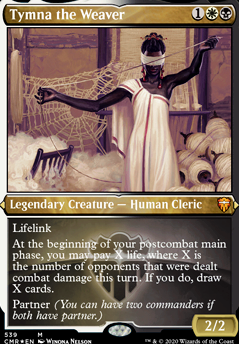Land (31)
- 1x Arid Mesa
- 1x Bayou
- 1x Bloodstained Mire
- 1x Breeding Pool
- 1x City of Brass
- 1x Command Tower
- 1x Exotic Orchard
- 1x Flooded Strand
- 1x Forbidden Orchard
- 1x Gemstone Mine
- 1x Godless Shrine
- 1x Horizon Canopy
- 1x Mana Confluence
- 1x Marsh Flats
- 1x Misty Rainforest
- 1x Nurturing Peatland
- 1x Overgrown Tomb
- 1x Polluted Delta
- 1x Savannah
- 1x Scalding Tarn
- 1x Scrubland
- 1x Tarnished Citadel
- 1x Temple Garden
- 1x Tropical Island
- 1x Tundra
- 1x Underground Sea
- 1x Verdant Catacombs
- 1x Waterlogged Grove
- 1x Watery Grave
- 1x Windswept Heath
- 1x Wooded Foothills
Artifact (6)
- 1x Lion's Eye Diamond
- 1x Lotus Petal
- 1x Mana Crypt
- 1x Scroll Rack
- 1x Sensei's Divining Top
- 1x Sol Ring
Enchantment (3)
Instant (28)
- 1x Abrupt Decay
- 1x Assassin's Trophy
- 1x Brainstorm
- 1x Chain of Vapor
- 1x Cyclonic Rift
- 1x Dispel
- 1x Dovin's Veto
- 1x Eladamri's Call
- 1x Flash
- 1x Flusterstorm
- 1x Force of Negation
- 1x Force of Vigor
- 1x Force of Will
- 1x Lim-Dul's Vault
- 1x Memory's Journey
- 1x Mental Misstep
- 1x Mystical Tutor
- 1x Nature's Claim
- 1x Noxious Revival
- 1x Pact of Negation
- 1x Path to Exile
- 1x Silence
- 1x Summoner's Pact
- 1x Swan Song
- 1x Vampiric Tutor
- 1x Veil of Summer
- 1x Worldly Tutor
Sorcery (9)
Commanders (2)
Creature (21)
- 1x Avacyn's Pilgrim
- 1x Birds of Paradise
- 1x Cephalid Illusionist
- 1x Dark Confidant
- 1x Deathrite Shaman
- 1x Elves of Deep Shadow
- 1x Elvish Mystic
- 1x Fatestitcher
- 1x Fyndhorn Elves
- 1x Grand Abolisher
- 1x Hapless Researcher
- 1x Hermit Druid
- 1x Laboratory Maniac
- 1x Llanowar Elves
- 1x Muldrotha, the Gravetide
- 1x Narcomoeba
- 1x Noble Hierarch
- 1x Nomads en-Kor
- 1x Phantasmal Image
- 1x Protean Hulk
- 1x Spellseeker
Suggestions
Updates Add
Comments
Attention! Complete Comment Tutorial! This annoying message will go away once you do!
Important! Formatting tips — Comment Tutorial — markdown syntax
Please login to comment
Casual
99% Competitive
| Date added | 4 years |
| Last updated | 4 years |
| Legality | This deck is not Commander / EDH legal. |
| Rarity (main - side) | 5 - 0 Mythic Rares 58 - 0 Rares 22 - 0 Uncommons 15 - 0 Commons |
| Cards | 100 |
| Avg. CMC | 1.74 |
| Tokens | Bird 2/2 U, Spirit 1/1 C |
| Folders | Gang Shit |
| Votes | |
| Ignored suggestions | |
| Shared with | |
| Views |


